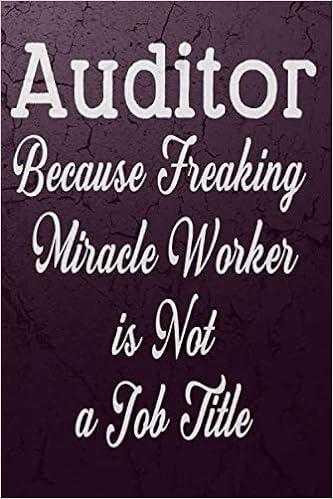Question
The John Marshall Company, Inc., which provides consulting services to major utility companies, was formed on January 2 of this year. Transactions completed during the

The John Marshall Company, Inc., which provides consulting services to major utility companies, was formed on January 2 of this year. Transactions completed during the first year of operation were as follows:
January 2 Issued 600,000 shares of stock for $10,000,000.
January 10 Acquired equipment in exchange for $2,000,000 cash and a $6,000,000 note payable. The note is due in ten years.
February 1 Paid $24,000 for a business insurance policy covering the two-year period beginning on February 1.
February 22 Purchased $900,000 of supplies on account
March 1 Paid wages of $185,600
March 23 Billed $2,730,000 for services rendered on account
April 1 Paid $100,000 of the amount due on the supplies purchased February 22.
April 17 Collected $210,000 of the accounts receivable
May 1 Paid wages of $200,400.
May 8 Received and paid bill for $98,200 for utilities.
May 24 Paid $42,500 for sales commissions.
June 1 Made the first payment on the note issued January 10. The payment consisted of $60,000 interest and $200,000 applied against the principal of the note.
June 16 Billed customers for $560,000 of services rendered.
June 30 Collected $300,000 on accounts receivable.
July 10 Purchased $155,000 of supplies on account.
August 25 Paid $160,000 for administrative expenses.
September 23 Paid $30,000 for warehouse repairs.
October 1 Paid general wages of $90,000.
November 20 Purchased supplies for $60,000 cash.
December 15 Collected $125,600 in advance for services to be provided in December and January.
December 30 Declared and paid a $50,000 dividend to shareholders.
The chart of accounts that Marshall Company, Inc. uses is as follows:
Assets:
101 Cash
102 Accounts receivable
103 Supplies
104 Prepaid insurance
110 Equipment
112 Accumulated depreciation
Liabilities:
201 Accounts payable
202 Unearned service revenue
203 Wages payable
210 Interest payable
220 Notes payable
Stockholders Equity:
301 Common stock
310 Retained earnings
320 Dividends
Revenues:
401 Service revenue
Expenses:
501 Wage expense
502 Utility expense
503 Selling expense
504 Administrative expense
505 Repairs expense
506 Insurance expense
507 Supplies expense
510 Depreciation expense
520 Interest expense
Other:
601 Income summary
Trial Balance Worksheets Unadjusted trial balance Debit Credit Adjusting Journal Entires Debit Credit Adjusted trial balance Debit Credit Closing Entires Debit Credit Closed Trial Balance Debit Credit Cash Accounts receivable Supplies Prepaid insurance Equipment Accumulated depreciation Accounts payable Unearned service revenue Wages payable Interest payable Notes payable Common stock Retained earnings Dividends Service revenue Wage expense Utilities expense Selling expenses Administrative expenses Repairs expense Insurance expense Interest expense Supplies expense Depreciation expense Trial Balance Worksheets Unadjusted trial balance Debit Credit Adjusting Journal Entires Debit Credit Adjusted trial balance Debit Credit Closing Entires Debit Credit Closed Trial Balance Debit Credit Cash Accounts receivable Supplies Prepaid insurance Equipment Accumulated depreciation Accounts payable Unearned service revenue Wages payable Interest payable Notes payable Common stock Retained earnings Dividends Service revenue Wage expense Utilities expense Selling expenses Administrative expenses Repairs expense Insurance expense Interest expense Supplies expense Depreciation expenseStep by Step Solution
There are 3 Steps involved in it
Step: 1

Get Instant Access to Expert-Tailored Solutions
See step-by-step solutions with expert insights and AI powered tools for academic success
Step: 2

Step: 3

Ace Your Homework with AI
Get the answers you need in no time with our AI-driven, step-by-step assistance
Get Started


